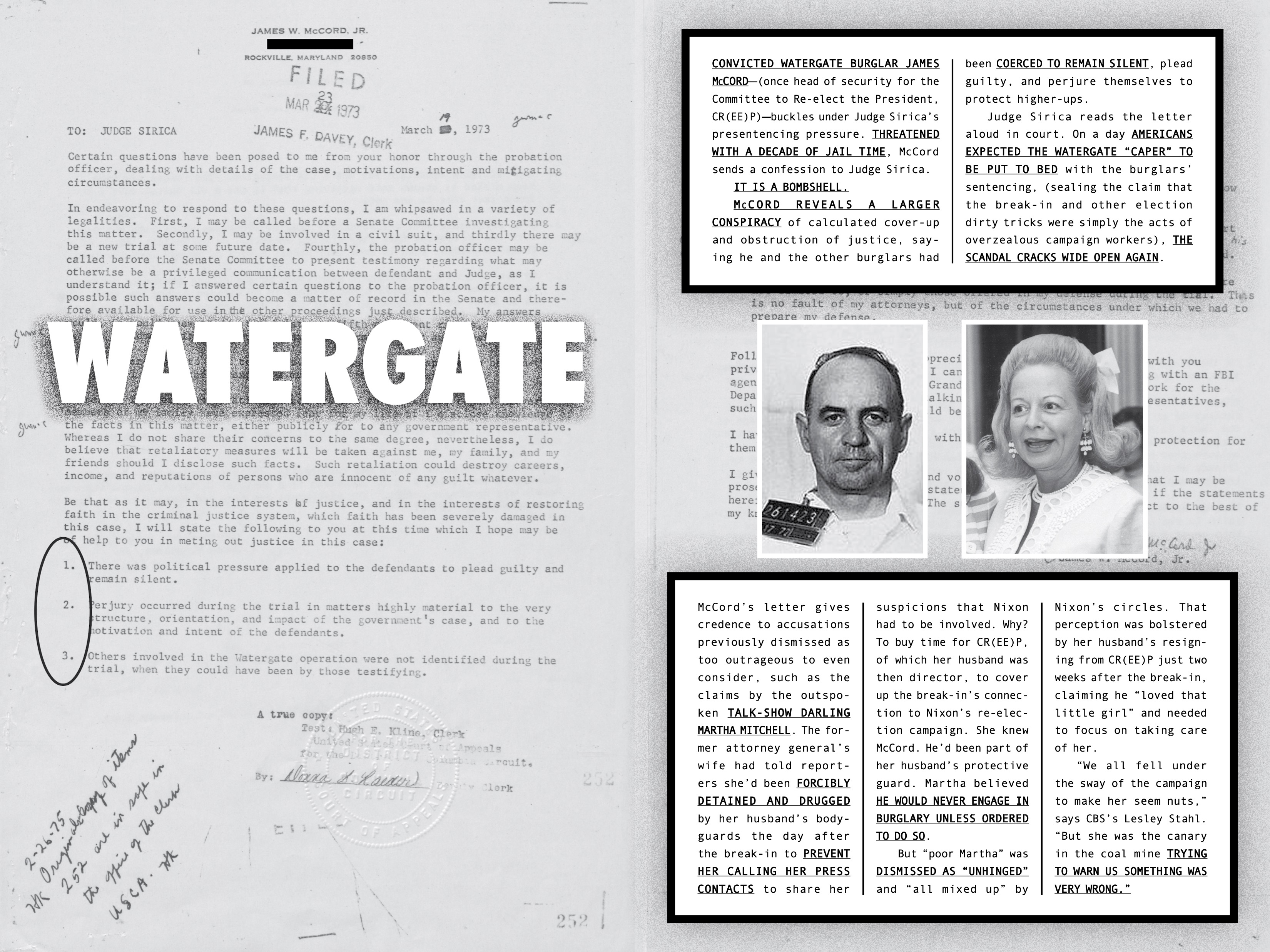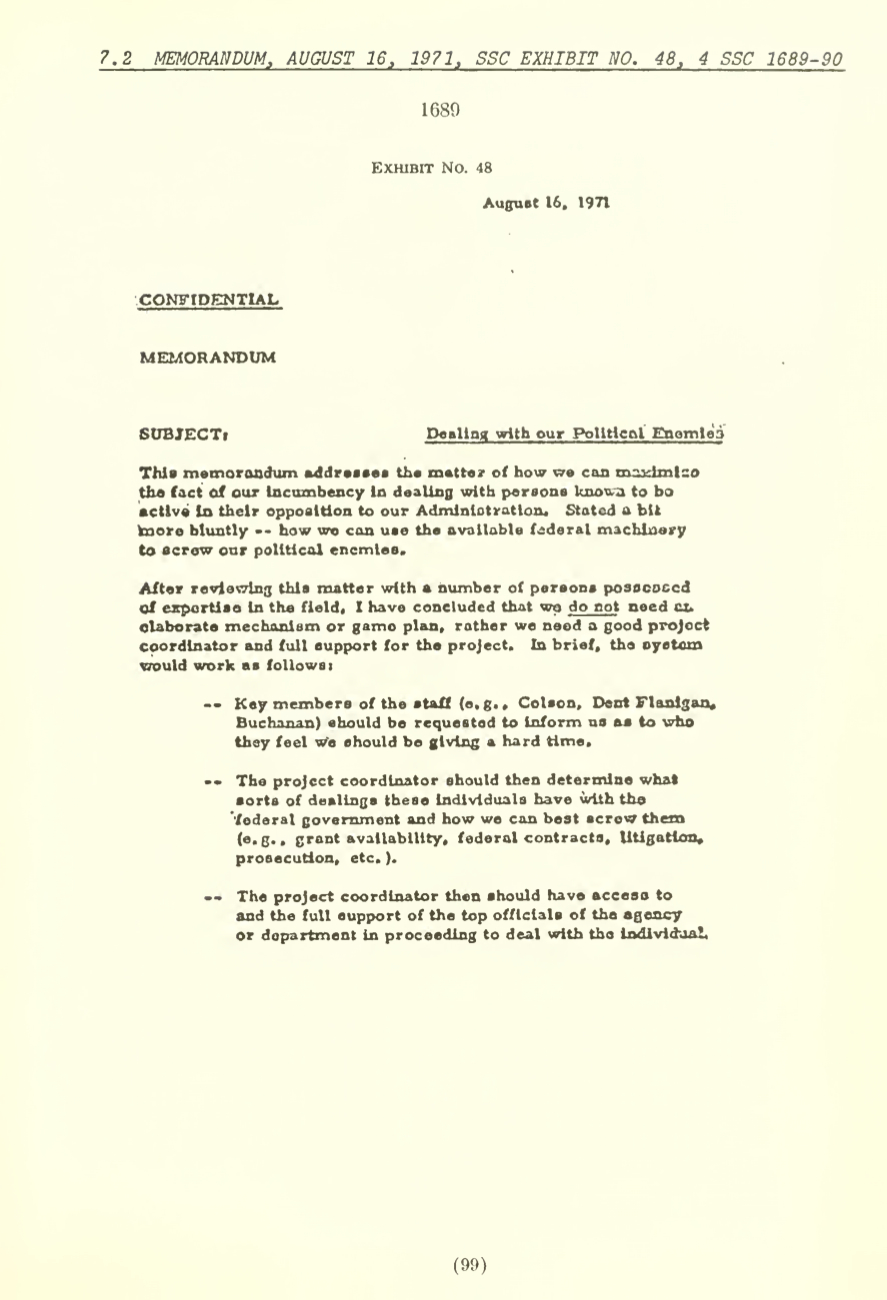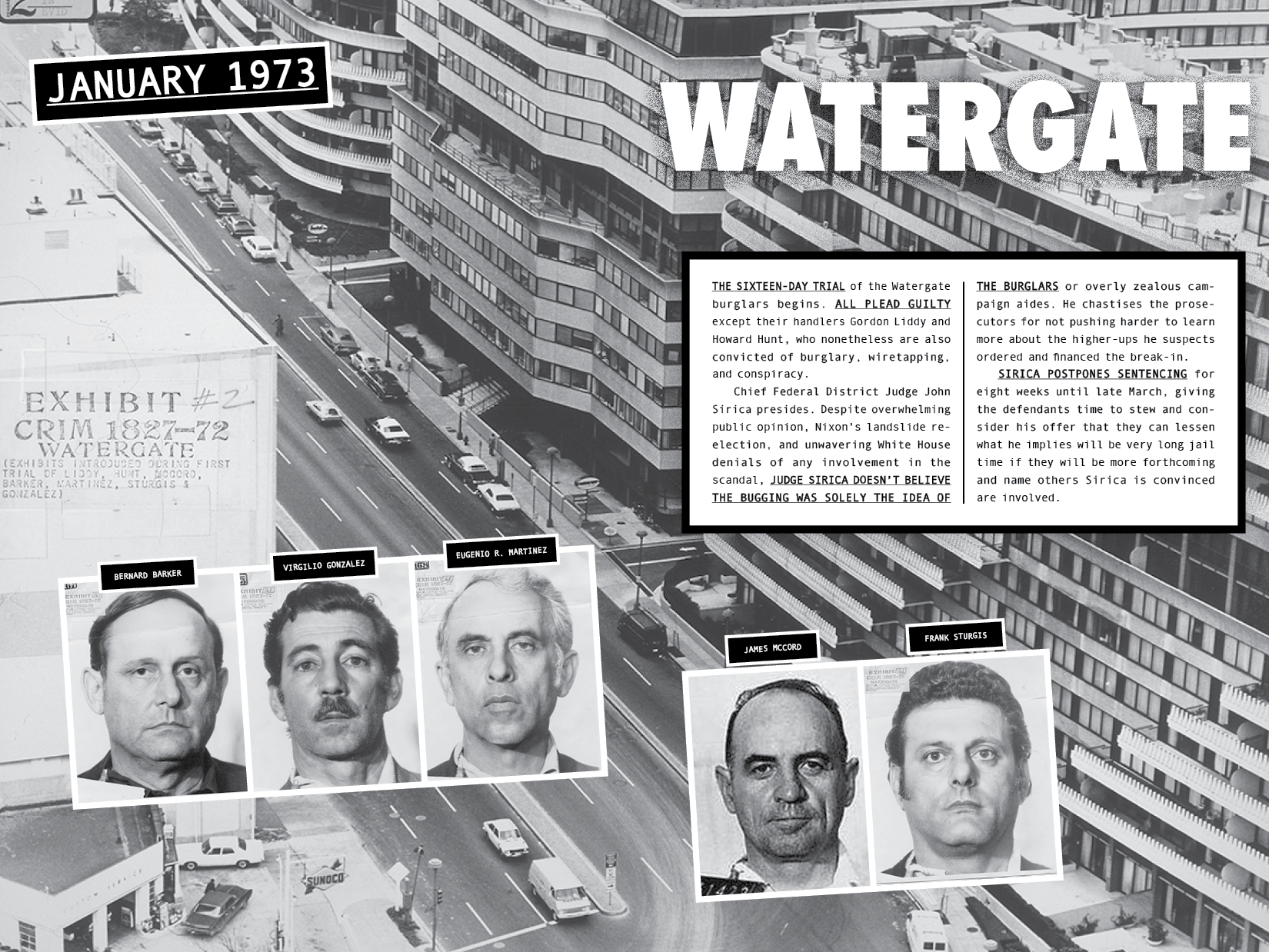
[ Back to Historical Fiction ] -> [ Back to Truth, Lies, and the Questions in Between ]
Watergate
Truth, Lies, and the Questions in Between
After all was said and done, the facts of Watergate are a relatively straightforward set of dominoes:
A president who wanted to stay in office exploited his power and federal agencies to go after his critics and “enemies.” His re-election campaign engaged in “dirty tricks” to discredit his Democrat opponents using clandestine surveillance, disinformation, character-smears, and flat-out lies to manipulate the vote.
When the Watergate burglars were caught in the act of trying to bug the Democratic National Headquarters, President Nixon and his advisers dismissed it as “a third-rate burglary” that they knew nothing about. Then they scrambled to cover up the wrongdoing and obstruct the investigations into it, using hush money, threats, and the promise of pardons to encourage the burglars and others to stay silent or actively perjure themselves. Nixon would turn on his lieutenants, throwing them out as scapegoats, as being the ones responsible for it all, as rogue, over-ardent loyalists acting entirely on their own.
He fought and delayed every subpoena for evidence and testimony, claiming executive privilege or national security. Later, Nixon would even claim in a televised interview with David Frost: “Well, when a president does it, that means it is not illegal.”
Eventually, the bipartisan Senate committee hearings, a dedicated press corps, plus stalwart DOJ special prosecutors, and a judge who would not be intimidated got to the truth, slowly, painfully, piece by piece. In the end, Nixon’s own words—secretly recorded in the Oval Office by his order and allowed into evidence by a unanimous Supreme Court ruling—made clear his involvement in the schemes.
At that point, led by arch conservative Senator Barry Goldwater (R-Arizona) who told his colleagues: “There are only so many lies you can take,” Republican leaders heeded the overwhelming evidence of misconduct and abuse of power. They put country over party and told the president he needed to resign, or he would likely be impeached by both chambers of Congress for criminal acts.
Then and only then, Richard Nixon finally respected the American people and the U.S. Constitution and did so.
Of course, the full story reads more like a who-dun-it mystery or Greek tragedy, filled with stunning plot twists: jaw-dropping discoveries, hubris, betrayals, soul-searching and disillusionment, plus gut-wrenching arguments, accusations, and suspicions between Americans. Nixon’s replacement, President Gerald Ford, would call the journey “our long national nightmare” and “the internal wounds of Watergate, more powerful and poisonous than foreign wars.”
It lasted from June 17, 1972 to August 9, 1974.
The spine of Truth, Lies, and the Questions in Between is a newsmagazine-style photo essay of factual people, events, and headlines. Laced in chapter-month by chapter-month, these photos and captions punctuate my fictional narrative, the events they picture influencing my characters. My purpose in using that unique format is to offer a compelling story that engages readers while also providing an evocative and succinct visual synopsis of that monumental year of 1973—including its unraveling of the Watergate cover-up, one startling revelation at a time.

For in-depth understanding of Watergate and all its aspects, see below for some of the best sources about the scandal that rocked, divided, and ultimately redefined the nation:
THE TIMELINE:
From the Washington Post: https://www.washingtonpost.com/history/interactive/2022/timeline-watergate-scandal-revelations/
History.com: https://www.history.com/news/watergate-scandal-timeline-nixon
Historyonthenet: https://www.historyonthenet.com/watergate-scandal-timeline
The Ford Library: https://www.fordlibrarymuseum.gov/museum/exhibits/watergate_files/content.php?section=2&page=d
UVA’s Miller Center: https://millercenter.org/the-presidency/educational-resources/watergate
Britannica: https://www.britannica.com/event/Watergate-Scandal
THE SENATE COMMITTEE HEARINGS:
PBS: https://www.pbs.org/newshour/politics/a-look-back-at-the-watergate-hearings-50-years-later
To see and hear their testimony (scroll to individual photos and click on dates): https://americanarchive.org/exhibits/watergate/cast-of-characters
THE PLAYERS:
Careers and reputations were both made and destroyed by Watergate. These things rose in esteem: investigative journalism; non-partisan, clear-eyed prosecutors and judges; the essential requirement of truth in public discourse and from our leaders; and our democracy’s unique system of checks and balances.
69 people were indicted and 48 convicted in Watergate. The charges against them ranged from contempt of court to perjury to illegal campaigning to obstruction of justice. Their jail time varied from one month to four-and-a-half years. Ford pardoned Nixon before he was ever formally charged with anything.
The cast of people involved in Watergate—its crimes, its reporting, and its prosecution—was large. Here are round-ups on the best known and most consequential and what ultimately happened with them:
https://www.pbs.org/newshour/politics/storied-figures-who-made-watergate-an-american-epic
https://www.history.com/news/watergate-where-are-they-now
https://www.washingtonpost.com/watergate-50th-anniversary/
STUDY GUIDES:
https://www.journalisminaction.org/case/watergate
https://newseumed.org/tools/lesson-plan/watergate-video-lesson
https://www.pbslearningmedia.org/resource/ush22-soc-watergatetapes/the-watergate-tapes/


